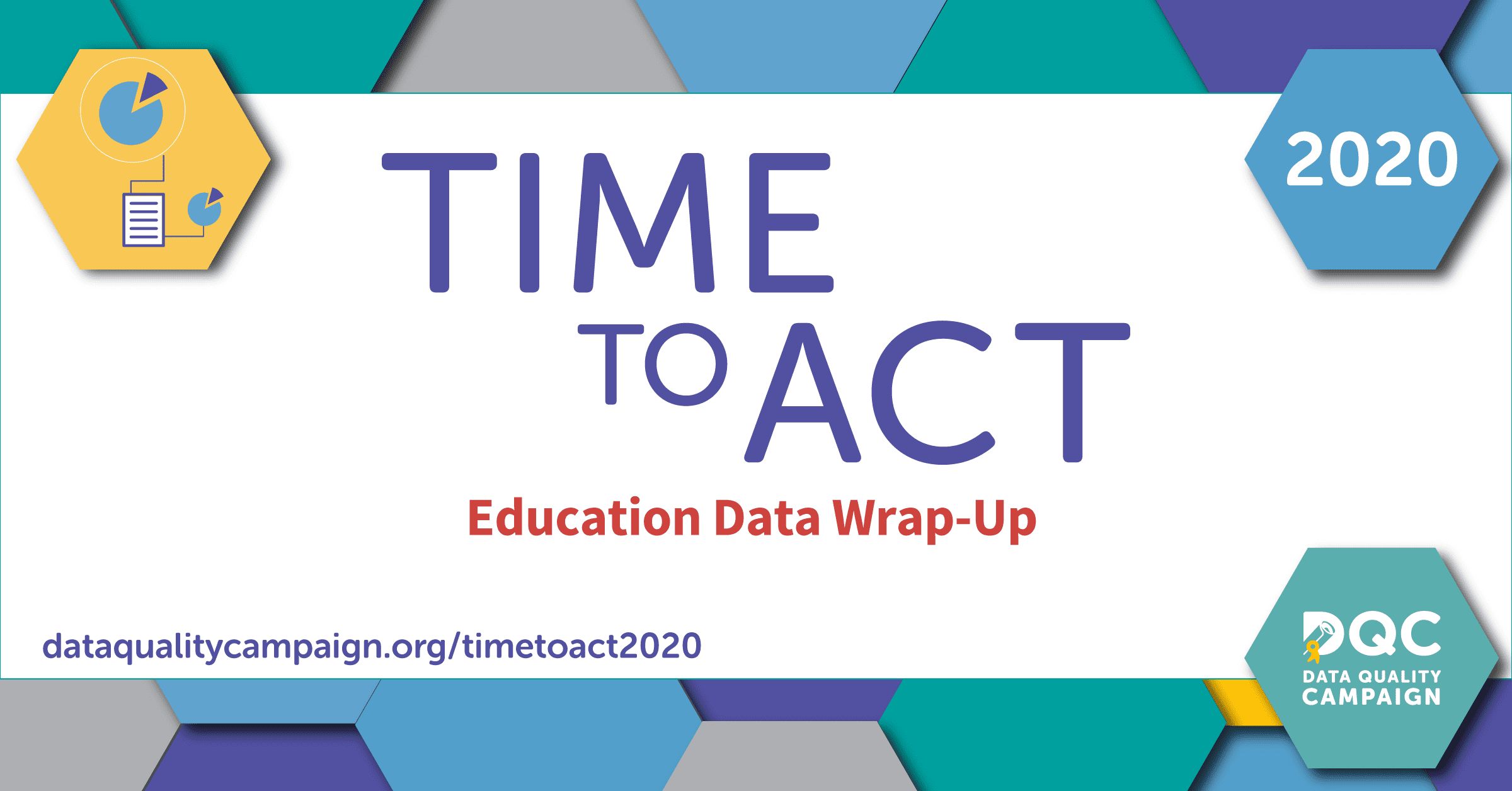This year saw disruptions to schools and to students’ lives across the country. With a global pandemic shutting school doors, causing economic instability, and highlighting the impact of systemic racism, policymakers and education leaders are looking to data to help them respond and recover.
DQC’s 2020 research identified several key themes that marked this unprecedented year—and that will likely continue to frame education policy conversations in the new year. Following are five things to know heading into 2021. Read the full report for more details.

Teachers are most interested in data about which lesson plans/teaching approaches were most successful while schools were closed (65 percent) and the amount of academic progress students made during that time (61 percent).
89 percent of parents are interested in information about how coronavirus-related interruptions affected students’ long-term outcomes (e.g., high school graduation, college enrollment, or future wages).
Georgia puts data in the hands of teachers and parents. In Georgia, parents and educators have secure access to data about their own students’ academic performance and growth over time. Georgia’s Department of Education developed a system that seamlessly connects each district’s familiar, local data portal to the state’s longitudinal data system without requiring additional logins. Every parent and teacher can see their students’ performance in different subjects alongside curated resources to personalize learning and support student success. Empowered with data, parents and teachers can better understand their students’ progress, engage in more informed conversations with each other, and ensure that their students have the supports they need.

20 percent of the 242 education data-related bills that state legislators considered this year addressed early childhood, postsecondary, or workforce data.
Nebraska connects workforce and education information. This year, Nebraska legislators passed the Nebraska Statewide Workforce and Education Reporting Act. This law requires the state to connect workforce data from the Department of Labor to the existing state longitudinal data system. With education and workforce data side by side, students, parents, policymakers, institutional leaders, and researchers will have more of the information they need to better understand student pathways through education and the workforce, make informed decisions, and support students’ long-term career success.
83 percent of teachers and 80 percent of parents agree that it would be beneficial for different public agencies to securely share information with each other about children and their families to coordinate services and resources during pandemic-related school closures.
States get benefits to families. Prior to COVID-19, nearly 30 million low-income students received daily free or reduced-price lunches through their school—a critical support that they lost access to when schools were forced to close their doors in the spring. To prevent any lapse in these supports, education and social service agencies in 31 states used linked data systems to quickly distribute new electronic benefit transfer (EBT) cards to families not already enrolled in assistance programs (e.g., SNAP) and then directly transferred meal stipends via EBT cards without requiring any actions from families. This solution ensured that families got the supports they needed to keep students healthy, fed, and engaged in school throughout the transition to distance learning.

Some state leaders are prioritizing data to understand student learning needs during the pandemic. Michigan passed a law requiring districts to administer formative English language arts and math assessments and report aggregated results to the state. Other states, such as New Jersey and Texas, provided districts with optional diagnostic assessments to assess student learning.
Five states (Arizona, California, Michigan, Minnesota, and Vermont) passed new legislation in 2020 addressing how to calculate student attendance and enrollment in light of school closures.
Illinois’s state report card helps the public use data. Illinois’s state report card presents the public with robust education data through clear data visualizations alongside detailed explanations of important concepts and context on how each reported measure relates to student success. By going beyond legal compliance in their public reporting, leaders in Illinois are helping to make data about the state’s schools understandable and useful—a critical way to build trust in data’s value and use.

In 2019, 28 state education agencies were awarded grants through the federal SLDS program. The most commonly proposed activities in the grant applications of states that received awards were establishing new data linkages (20 states), developing new data reports or tools like dashboards (19 states), updating SLDS infrastructure (17 states), creating data governance processes (16 states), and engaging in partnerships and external collaboration (14 states).
Massachusetts is turning data into insights. As part of its recently awarded SLDS grant, Massachusetts plans to expand access to its statewide longitudinal data system. The state plans to create a statewide research hub—a single platform where state agency staff, researchers, and the public can explore data and reports from across the P–20W system. The state will also use the hub to promote evidence-based policies through case studies and other actionable resources focused on proven practices already at work across Massachusetts. Through these steps, state leaders hope to “move from a solid foundation of data access to a strong focus on data action.”



